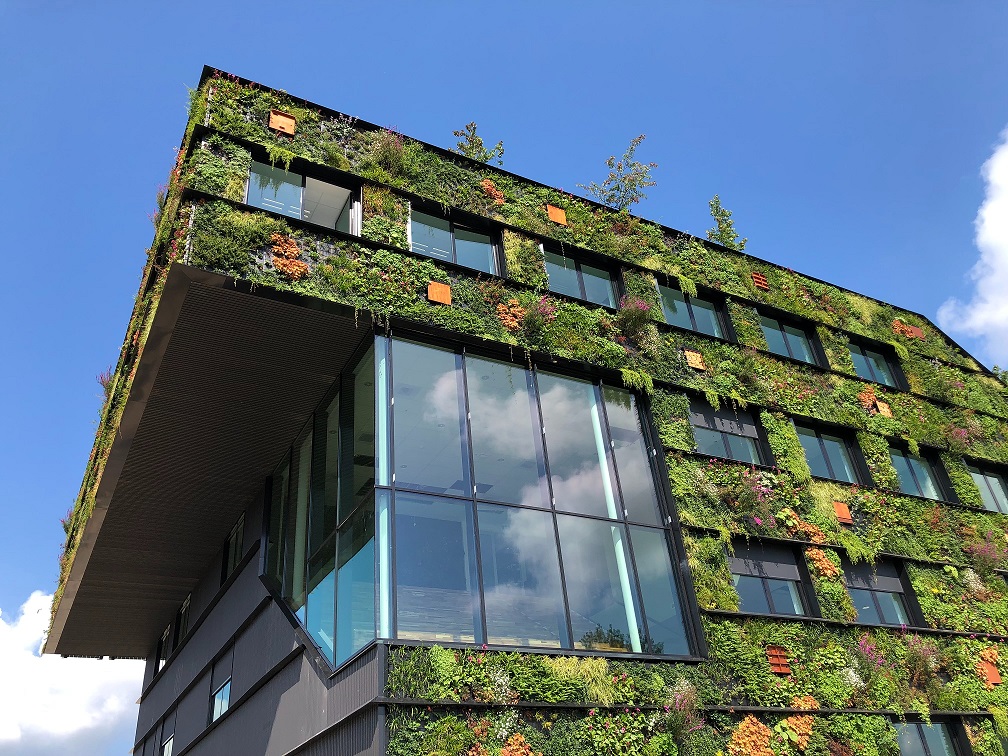Modern buildings are one of the most carbon intensive products in human society.
An office or home built in the 21st century is dizzyingly complicated – plumbing, wiring, insulation, an entire world exists beneath the surface of a perfectly furnished property. This level of complexity has expanded over decades as we add layers of technology and convenience to our everyday lives.
But this complex system comes with a heavy environmental price tag. It is estimated that the building and construction sector accounts for 34% of global energy demand and 37% of energy-related emissions.
It takes a lot to keep the lights on and the heat running, but it doesn’t have to be this way.
Light bulb moment
The World Green Building Council (WGBC), a non-profit, works to support the sector to become greener, more sustainable, and to achieve net zero emissions. Its network of Green Building Councils operates in over 70 countries to promote sustainable practices within the industry.
A recent report from the organisation identifies some of the solutions to achieving net zero in buildings. These include setting strong targets, access to sustainable finance, accurate data collection, and deep retrofitting of existing buildings.
Another key solution is electrification. Replacing old gas boilers with heat pumps, installing roof-top solar panels, and upgrading to energy efficient lighting will have a huge impact on a building’s carbon footprint.
Industry estimates highlight how switching the world’s buildings to use connected LED lighting could save around 260 million tonnes of carbon dioxide each year, or over 900,000 gigawatt hours, more than three times the annual electricity consumption of the United Kingdom. If we want all buildings to be net zero within a generation then we will need to look at lighting.
The World Green Building Council’s CEO, Cristina Gamboa, commented that “we know that the solutions exist for a decarbonised future; and our network is ready to support industry and government to ensure that pledges, commitments and promises are turned into action.”
Data-driven insights
Signify, a global leader in lighting, has long made a commitment to net zero emissions and since 2020 it has been carbon neutral in its own operations. One of its new innovations works on the theme of data collection and environmental management. The idea is to help building owners use their space more efficiently by monitoring what needs to be used and when.
The ‘Interact Space’ platform uses environmental sensors to analyse vital data such as temperature, humidity, and carbon dioxide levels. This is combined with a people sensor which counts how many people are on a floor or in a room. The data can be used to adjust working conditions to avoid unused space and promote productivity.
Greg Nelson, Signify’s Global Business Leader, Systems and Services, commented: “There has been a major evolution in what we expect from our place of work. Employees today expect their work environment to be adapted to their needs and support their health and well-being. Signify is the first lighting company to support building owners with the information they need to optimize working conditions for tenants and their employees”.
It is precisely these kinds of innovations, with lighting seen as a service, which will be needed in the net zero buildings of the near future. Using data-driven insights can boost the power of LED units – dramatically reducing the inefficient use of space and electricity, which, in turn, means lower carbon emissions and increased quality of life. Real-time data allows us to continuously evaluate progress and determine where the efficiency savings can be made.
Circular procurement
These insights are especially important in public sector spaces such as schools, or hospitals, where creating the right environment can have a significant impact. Research has shown, for example, that energy efficient lighting leads to better learning outcomes for students with increased concentration and reading speed.
In the European Union there is also the added challenge to meet the new Energy Efficiency Directive, which requires the public sector to reduce its annual energy consumption by 1.9%, which as a result, will require upgrading 3% of the total floor space in public buildings per year.
Public sector procurement has a central role to play in accelerating the uptake of net zero buildings. In the European Union alone an estimated €2 trillion is spent each year by a collection of 250,000 public authorities.
The public sector acts across the economy and its influence could be used to enable rapid change. Instilling circular principles into its procurement processes would force the building sector, and its supply chains, to rethink how it does business.
Tackling carbon emissions in buildings is no small feat. The vast majority of homes in a net zero future have already been built. We need to upgrade and retrofit where we can, using new smart technologies to allow us to live more efficiently and without taking energy for granted.
The good news is that the net zero transition will have a positive impact on people’s quality of life and we shouldn’t wait to usher in that future.
This post was sponsored by Signify. See our editorial guidelines for what this means.
